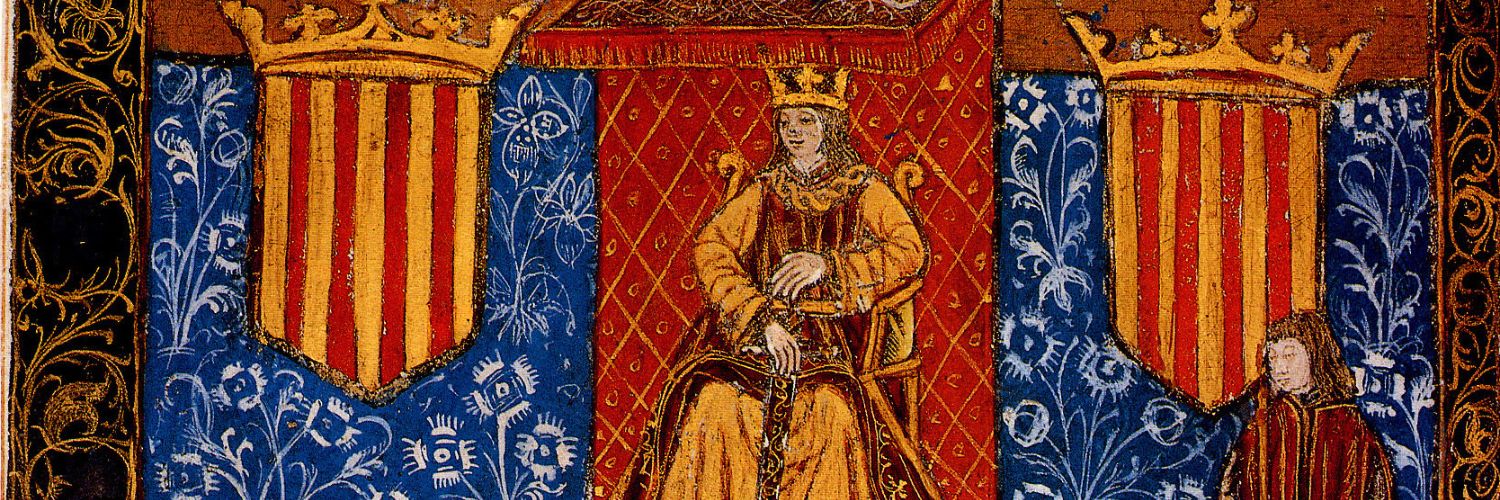

Us [and them]
Since time immemorial, what the Greek geographers defined as the Iberian Peninsula has been the basis on which Spanish history has been constructed, forging different realities. But with the development of Spain – at the beginning of the 19th century – different political conceptions have sought a way of structuring it to their advantage at any price. Therefore, some have insisted on establishing a fictitious historical and territorial uniformity, simply because they share the same geography. Catalonia has shared this plot of land, but its historical reality is different and it is important to remember this, now that the debate is once again open.
The traditional history of Spain has been constructed based on the premise of giving a unique protagonism to Castile – extended with Andalusia and Extremadura – which has been exclusively identified with Spain. The periphery, especially the eastern Mediterranean and the northwest of the peninsula, has been allowed to play either a secondary role or to acquire a certain relevance from time to time, especially at times when Castilian decadence was most evident.
Thus, Castile – always from a negationist point of view – has made people believe that there is a “Spanish nation” and a “peripheral” identity that it has defined as nationalities. But the reality is different. The Spanish nation, like the Catalan nation or the Basque nation, exists because it is acknowledged by those who claim to be part of it. Therefore, trivialisation is once again used to confuse public opinion and try to avoid any legitimate process of self-determination. In this sense, the construction of the identity of the Spanish nation often becomes a systematic destruction of the “peripheries”, that is to say, Spanish nationalism ends up constructing its identity by repressing the differences between the territories it considers to be national.
This vision has highlighted the serious problem of Spain’s historical reality. Firstly, it has highlighted Spain’s imperfection as a political project, given that it has repeatedly shown the continuous issues of adaptability to Western standards, especially in terms of the dynamics of adopting capitalism, liberalism, and rationalism in the triple aspect of the economic, political and cultural realities. Secondly, and even more importantly, Castile’s utter failure in its task of making Spain a harmonious community, fully satisfied with itself and tolerant of the other territories that make it up. If the plurinationality of the state is hidden, the past is distorted.

Spain’s imperfection as a political project has become evident, given that it has repeatedly shown the continuous problems of adaptability to Western standards.
Dismantling “the unity of destiny as a universal fact”
Within the Francoist school system, historiography was articulated according to the concept of “Reconquest”, which is a historiographical concept – still used in the secondary school curricula of Castile – that describes the process of recovery – since the Muslims were not the legitimate owners of the Hispanic territory – of the feudal world over the Muslim and Jewish world. This process would begin shortly after the arrival of the Arabs on the Iberian peninsula (8th century) and would end with the Catholic Monarchs (15th century), who would eventually unify “Spain” as an integral state. This Reconquest would end up forging “the Spanish spirit”.
In the middle of the last century, a group of historians – in order to legitimise the victors of the Civil War – undertook the task of constructing historical arguments to support the new regime. The theoretical corpus was based on finding “the essence of Spain”. Thus, Spanishist historiography came to “prove” that there were indeed distinctive characteristics of continuity between the prehistoric past and the present which define this “Spanish spirit”.
Currently, research tends to break the territorial homogeneity of the provinces. It shows an increasingly clear predisposition to carry out research that emphasises social and territorial differences, such as the latest studies on the 8th century Hispano-Goths, which show significant differences between the peninsular societies, mainly conditioned by the habitats where they carried out their activities. The archaeological evidence -without shying away from documentary sources- shows conclusively that the process of Romanisation affected them in very different ways.
Therefore, the crises of late antiquity from the 3rd to the 8th centuries would provoke much more profound changes, which would affect the different peninsular territories unequally. Consequently, the arrival of the Arabs in the Iberian Peninsula would also affect these societies in different ways, so that the idea of continuity between the Visigothic kingdom and the subsequent political formations would be diluted like sugar.
Archaeology has confirmed that the penetration of the Muslim world into peninsular territory was not as traumatic as it was made out to be. The archaeological remains reveal that, after the conquest, the peninsular territory was never abandoned. Therefore, all this would show that many Hispano-Goths professed the new Muslim faith, not so much out of conviction, but in order to maintain ownership of the land. And this land would be transformed by the introduction of new systems of agricultural production, based mainly on the management and power of water.

Research tends to break down the territorial homogeneity of the provinces and shows an increasingly clear predisposition to carry out research that emphasises social and territorial differences.
Delegitimising the origins in order to cancel out the differences
From the 9th century onwards, most of the peninsular territories were organised as kingdoms, with the king as their highest representative. In contrast, in the northeastern territories of the peninsula, the county would be the administrative structure to be implemented, and the count – imposed from Aachen – would be in charge of administering justice, guaranteeing public order and managing taxation.
This differentiating element – such as the Carolingian organisation of the Catalan territory – will be widely combated by Francoist historiography through a policy of diminishing its relevance. For this reason, it will be considered a government structure with little historical relevance and, for this reason, there will be a lack of will to disseminate it – both in academic circles and in school curricula – which will impact its knowledge.
Therefore, we should not be surprised that these historians do not want to understand that our singularity is the result of a legal framework different from the Hispanic matrix. The Catalan territory was assigned following the Carolingian policy of the Renovatio Imperii. This was probably the reason for its lack of diffusion since the essence of Spain was so far away!
Certainly, the title of king is one of the oldest and best-known political offices. The oldest ruling term is found in the Indo-European REG (to rule/rule) which evolved into Latin as REX. In the context of the political transformations that took place from the 4th century onwards in Western Europe, large territories were governed by Germanic military leaders, who gradually freed themselves from Roman domination and organised themselves as kingdoms. The new territorial leaders – whether Goths, Franks or Suevi – followed their legal tradition and adopted the title of rex as the highest political figure.
Therefore, all the peninsular rulers would be perpetuating their juridical legality. While the Astur-Leonese, Navarrese and Castilian dynasties would continue to use the title of king, the Catalan sovereign would use the title of count, given that he would continue to be legally linked to the French dynasty – heir to Carolingian legality through the Capeta family – and legitimised by the Pope, until the signing of the Treaty of Corbeil and ratified at the Treaty of Anagni in the mid-13th century. In practice, all will be sovereigns with the same power, whether kings or counts.
The most paradoxical fact about the history of Spain – built on the historiographical concept of the Reconquest – is that it is constructed on the false premise of assigning a continuing legitimacy from the Visigothic kingdom to the Astur kingdom.
It has been widely concluded that this maxim is not true. Historians have shown that the indigenous Cantabrian populations – be they Astur, Cantabrian or Basque – always maintained a very distant and warlike relationship with the Roman, Visigothic, Arab or Carolingian world. Therefore, their isolation was due more to a problem of a poor administrative framework than to fierce resistance against Roman, Visigoth, Arab or Carolingian conquerors. Consequently, the propagandistic pamphlet that the three chronicles of Alfonso III of Asturias represent – especially the Albeldense, which in fact is where the famous concept of Reconquest comes from – must be read for what they are: a legal legitimisation before public opinion (and God) of the aggression carried out against a part of the Hispanic population whose only difference – compared to the rest of the population – is that they profess a different religion.

The history of Spain -built on the historiographical concept of the Reconquest- is constructed on the basis of a false premise.
The will to alter reality
“In Dei nomine. Ego Ramirus, Dei gratia rex aragonensis, dono tibi, Raimundo [Berengario], barchinonensium comes et marchio, filiam meam in uxorem, cum tocius regni aragonensis integritate, sicut pater meus Sancius, rex, vel fratres mei, Petrus et Ildefonsus…. ” is undoubtedly one of the key fragments of the history of Catalonia that has aroused the greatest historiographical hostility, especially on the Aragonese side.
This fragment corresponds to the famous “Capitulaciones Matrimoniales de Barbastro”, which were ratified with the “Renuncia de Zaragoza” – both from 1137 – by which King Ramiro II of Aragon, the Monk, publicly informed his subjects that he was giving his daughter, his kingdom and his honours to Count Ramon Berenguer IV, Count of Barcelona and that this donation would be sealed through the marriage between the Count of Barcelona and his daughter, Peronella.
As a result, the Count of Barcelona was named Crown Prince of Aragon, and Ramiro – despite retaining the title – was returned to the monastery of San Pedro el Viejo in Huesca, from where he left in haste to be crowned king. For her part, Peronella – only one year old – was sent to Barcelona to be educated as the future Countess Consort of Barcelona and Queen of Aragon. Thirteen years later, Count Ramon Berenguer married her in Lleida, once she was legally old enough to do so, that is, fourteen years old. It would then be the first-born son of this union – Alfonso el Trovador – who would become the first person to hold both titles – count and king – which would legitimise the new political conception that arose from this donation.
Unaltered historical reality confirms the fact that after the “Public Renunciation of Saragossa”, the kingdom of Aragon remained in the political background, given that it had voluntarily dispossessed itself of its succession value, a key element in the 12th century. Despite this, the successive Counts of Barcelona would always respect and maintain all the Aragonese institutions, marking the beginning of the Catalan-Aragonese Confederation.
It is therefore essential not to fall into the political trap that circulates among certain Spanish circles, who argue that Peronella of Aragon was the key element that allowed the Catalan counties to be annexed to the kingdom of Aragon. It would be foolish to believe that a one-year-old princess would fall in love with a twenty-four-year-old count of Barcelona and that the latter – at the height of his dominions – would offer his territories to Aragon in exchange for “a more prestigious title”. Likewise, the fact of constructing two parallel genealogies – Alfonso I of Catalonia is the same as Alfonso II of Aragon – shows that there is malice and a desire to distort reality.
The real problem facing Aragon at the beginning of the 11th century was to find a legal solution in the will of King Alfonso I “el Batallador”, who, having died without descendants, had given all his territories to the military Orders, and this caused an institutional debacle. The Castilians – taking advantage of this power vacuum and legitimised by the king’s repudiated ex-wife – began the invasion of Saragossa, followed by the disconnection of Navarre through the figure of García Ramírez, known as “el Resaurador”. As a result, Aragon was severely weakened economically, with the consequent risk of disappearing.
Contrary to what Aragonese extremists would want you to believe, the union of Aragon with the Catalan counties was the only viable solution for the Aragonese oligarchy. It was the only way to put a stop to the pressure exerted by both Castilians and Navarrese and thus be able to boost its agricultural and livestock economy with a clear outlet to the Mediterranean markets.

It would be foolish to believe that a one-year-old princess would fall in love with a twenty-four-year-old count of Barcelona and that the latter – at the height of his dominions – would offer his territories to Aragon in exchange for “a more prestigious title.
Setting limits to power
At the end of the 11th century, a new mentality appeared in Barcelona society, based on work, business morals and friendship. Thus, Barcelona was able to develop its own form of capital accumulation, based on increasing and improving agricultural production in its territory, which enabled it to become the administrative epicentre of the Catalan counties. The notions of profit, investment and capital crystallised throughout the 12th century and led the Counts of Barcelona to conquer the cities of Tortosa, Lleida and Balaguer, and the frustrated attempt to conquer Mallorca.
And all this was possible thanks to a climate of social stability that, after the political disaster of the feudal revolts, led to the imposition of the convenientiae or feudal pacts between equals. From then on, the culture of the pact became generalised throughout the Catalan counties and became one of our peculiarities. As a result of this pact, the first version of the Usatges de Barcelona, the basis of Catalan customary law, was drawn up.
Gradually, Catalan sovereignty would be distributed among – counts, nobility, clergy and upright citizens – who would represent a large part of society. This constitutionalist policy would therefore be one of the distinctive features of the Crown, which from the 13th century onwards would be extended as the expansionist policies of the counts continued to be implemented. These new territories would be configured as states, where the Crown would ensure that the particularities of each territory were maintained. Catalonia would then be defined as a Principality, given that its highest authority would be the figure of a prince or the first among equals.
In contrast to the rest of the peninsular territories – where the problem of power was centred on sacralisation – in Catalonia, the conflict was centred on its use. The constant evolution of Catalan law would end up granting power to the count by cession (between equals). He would therefore be obliged to manage his expenditure correctly and to respect the different privileges, customs, privileges and usages of his territories. Therefore, pactism between equals will be encouraged, in order to balance the economic interests between the nobility, the clergy and the bourgeoisie, in order to maintain social stability.
As a result – and long before the English – the Catalan Courts would be the perfect model of parliamentarianism, which would constitute the nucleus of the Catalan pacifist tradition that has survived to the present day. Unfortunately, with the defeat of 1714 and the implementation of the Decree of Nueva Planta, the Catalan-Aragonese Confederation was fulminated and broken up into different provinces of a new centralised monarchy that would govern the entire Iberian Peninsula without legal differences.
11Onze is the community fintech of Catalonia. Open an account by downloading the super app El Canut for Android or iOS and join the revolution!
Leave a Reply
You must be logged in to post a comment.





Les “Capitulacions” de Ramir II em semblen poc transcendents, és 100% evident que es va posar principalment en valor el testament d’Alfons el Bataller, si no s’hagués posat en valor, no hagués fet falta cap tipus d’acord amb les ordres militars. És més que evident que es va treballar per seguir el primer testament, i que es va fer efectiu, quedant el regne d’Aragó en mans d’un fill de templer, doncs recordem que el pare de Ramón Berenguer IV es va convertir en templer al final de la seva vida (i ell mateix es convertia en templer temporal durant les campanyes militars).
Un cop Ramón Berenguer IV va tenir els seus acords amb les ordres militars, va prometre’s amb Blanca de Navarra, per també solucionar el conflicte obert pels navarresos, generat pel primer testament. Li importaven 3 pitos Peronella i les “capitulacions”, però la mort prematura del rei navarrès, va fer que el matrimoni no es dugués mai a terme, doncs el conflicte es va “solucionar” sol amb aquesta mort. En la meva opinió tot el tema de Ramir II només va servir per tranquil·litzar una part de l’oligarquia que es veia caient davant Castella, però el regne d’Aragó arriba a mans de Ramón Berenguer mitjançant un equilibri diplomàtic espectacular on, per no generar conflictes innecessaris, també acaba fent efectives les capitulacions.
Bona aportació la teva, Marc! Certament, el paper dels Ordes Militars en tot aquest atzucac aragonès és la clau de volta de la unió territorial. La resta són les conseqüències. Per altra banda, la renúncia al testament del Bataller no se solucionarà fins a l’any 1143, quan reunits a la ciutat de Girona totes les parts implicades, sobretot els Templers, obtindran el control de la frontera en detriment d’importants senyores feudals que duran dècades l’havien gestionada. Els Templers s’implicaran a fons en la conquesta de les més importants places andalusines de ponent i del sud del territori comtal. D’aquesta manera, a partir de la dècada del 1150, apareixeran infinitat de comandes templeres disseminades pel territori comtal -Barberà, Gardeny, Corbins, Granyena, Gandesa, Miravet- que aportaran una manera diferent de gestionar econòmicament el territori, cosa que acabarà comportant multitud de conflictes.
Gràcies
Gràcies per la lectura, Joan. Seguim a La Plaça!
👌
Gràcies, Carles! Seguim a La Plaça.
🙏🏽
Gràcies, Mercè! Seguim a La Plaça.